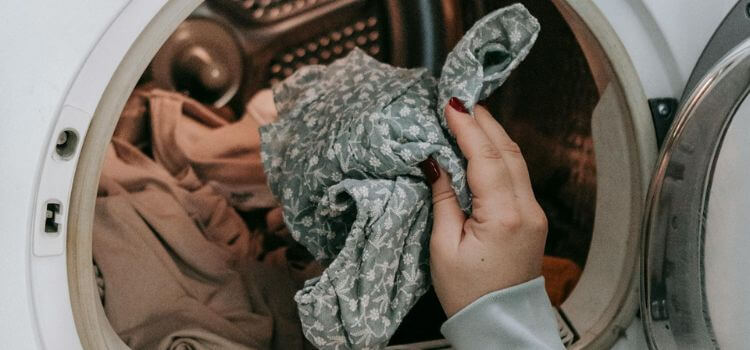As an Amazon Associate I earn from qualifying purchases.
Introduction:
Once considered that cloth diapers are old-fashioned.But in this era cloth diapers have become more popular in recent years as worries about the environmental effects of disposable diapers have grown. Because they can be reused, cloth diapers ultimately save money and reduce trash. Furthermore, a lot of moms discover that using cloth diapers is friendlier to their baby’s skin, lowering the possibility of diaper rash and irritation.
Common Stains on Cloth Diapers:
Stains on cloth diapers can come from various sources, including breast milk, formula, solid foods, and even minerals in water. Factors such as the type of fabric, the age of the stain, and the washing routine can also influence the severity of stains.
Pre-Treating Stains:
Successful stain removal from cloth diapers primarily depends on immediate action. Prevent stains as soon as you become aware of them, then wash the item. A stain remover made especially for cloth diapers can be used, or you can use a gentle method like washing the diaper in cold water.

Effective Stain Removal Techniques:
Method 1: Sunning
Cloth diaper stains can be effectively and naturally removed by sunning. To remove the stain, simply place the diaper in direct sunlight and let the UV rays bleach it away. This method is very useful for light-colored diapers and works best on fresh stains.
Method 2: Vinegar Soak
As a natural disinfectant, vinegar can assist in removing tough stains from cloth diapers. In a basin, add equal parts water and white vinegar. Soak the stained diapers for a few hours, then wash them normally
Method 3: Oxygen Bleach
Most cloth diapers may be safely cleaned with oxygen bleach, such OxiClean, which effectively lifts stains without causing harm to the fabric. To dilute, adhere to the manufacturer’s directions and soak the diapers before washing.
Method 4: Lemon Juice and Salt Paste
For difficult stains on cloth diapers, a paste consisting of lemon juice and salt can be applied immediately. After a few hours, let the paste sit before rinsing and washing normally. While the salt acts as a gentle abrasive, the lemon juice’s acidity aids in the stain’s breakdown.

Tips for Maintaining Cloth Diapers:
You should make sure to clean your cloth diapers on a regular basis to avoid stains from forming. Diapers that have been soiled should be washed as soon as possible. Washed this every two to three days with a mild laundry detergent that is fragrance- and additive-free
Eco-Friendly Stain Removal Alternatives:
Parents who care about the environment can make a variety of homemade stain removers with natural components like baking soda, hydrogen peroxide, and essential oils. Not only are these DIY remedies safer for the environment and your infant, but they are also more effective.
Preventing Stains:
Although stains cannot be completely avoided, there are things you may do to reduce their probability. To prevent stains, use diaper liners to form a barrier between your baby’s skin and the diaper. Prevent from using diaper creams that include zinc oxide.
Dealing with Stubborn Stains
Don’t give up if a stain still appears after attempting a few different eradication techniques. Certain stains might need to be professionally treated with steam cleaning or enzyme cleansers. Seek guidance from a cloth diaper maker or store for practical methods of removing tough stains.
Safety Considerations
When selecting stain removal techniques for cloth diapers, put your baby’s safety first. Whenever possible, stay away from harsh chemicals and use natural, baby-safe substitutes. After using stain removers, always give diapers a thorough rinse to get rid of any residue that could irritate your baby’s skin.
Conclusion:
Cloth diapering is more affordable, environmentally friendly.It provides greater comfort for babies.It has become more and more popular among parents who care about the environment. However, stain removal is a regular issue for parents who use cloth diapers. If stains are not properly removed, they can become undesirable and stubborn, originating from food, excrement, or other substances. This post will discuss effective strategies for stain removal from cloth diapers so that your child can benefit from them while they’re still fresh and clean..Although it may seem difficult, stain removal from cloth diapers is possible with the correct methods and supplies.By acting quickly, using gentle methods, and establishing a regular cleaning routine, you can keep your cloth diapers looking clean and fresh for years to come, ensuring your baby stays comfortable and happy.
FAQs (Frequently Asked Questions):
Although bleach can be useful, constant usage is not advised as it can eventually weaken the fabric of cloth diapers. Choose kinder substitutes like oxygen bleach or organic stain removers.
Every two to three days, cloth diapers should be washed to ensure good hygiene and to stop stains from forming.
Fabric softeners can leave a residue on cloth diapers, affecting their absorbency. It’s advisable to stay away from fabric softeners and use detergent made especially for cloth diapers.
While sunning is effective for many stains, particularly those caused by breast milk or formula, it may not completely remove all types of stains. Stubborn stains may require additional treatment.
Not all stain removers are safe to use on cloth diapers since some could include harsh chemicals that hurt your baby’s skin or harm the fabric. Make sure to always read product labels and select items that are safe for the environment and your infant.
As an Amazon Associate I earn from qualifying purchases.